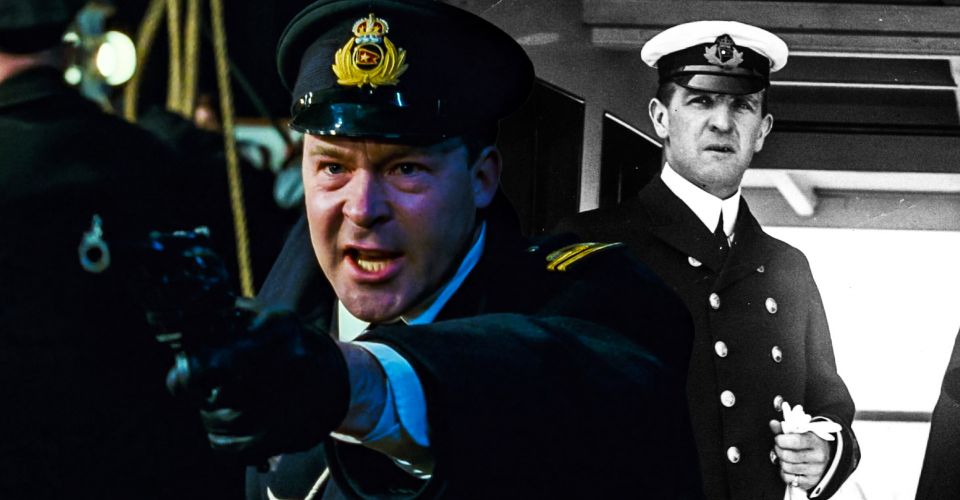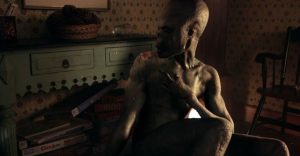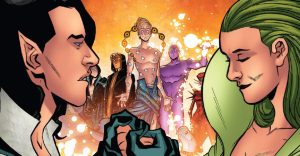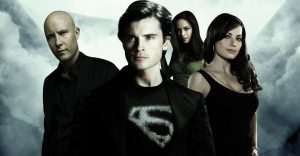Titanic True Story: Why Murdoch’s Family Were Offended By His Portrayal

Although the main characters and story in Titanic are fictional, it included characters based on real-life people, among those First Officer William Murdoch, whose family were offended by how the movie portrayed him. James Cameron is best known for his work in the sci-fi genre, with now-classics like The Terminator, Terminator 2: Judgment Day, and Aliens, but one of his biggest and most memorable projects isn’t from the sci-fi world: Titanic, a disaster drama movie released in 1997 and which became the most expensive movie ever made at the time.
Based on the accounts of the sinking of the RMS Titanic in 1912, Titanic tells the story of Rose DeWitt Bukater (Kate Winslet) and Jack Dawson (Leonardo DiCaprio), two passengers from opposite social classes who fall in love aboard the ship during its ill-fated maiden voyage. Over the course of four days, Rose and Jack met, fell in love, and defended their relationship from anyone who tried to keep them apart, and through all this, they met various characters based on real-life people. Some of them weren’t involved in the story of Jack and Rose but were key during the most difficult part of the movie: the sinking of the Titanic, and one of those was First Officer William Murdoch (Ewan Stewart).
Murdoch appears sporadically throughout the first two acts of Titanic and his presence becomes bigger when the ship hits the iceberg and starts to sink. Murdoch was put in charge of the bridge the night the ship struck the iceberg, and he’s the one mumbling “come on, come on, turn, turn” while the rest of the crew did their best to avoid the iceberg. Murdoch is later shown getting people on the lifeboats under the “women and children first” policy, but as panic and tension grew, Murdoch ended up doing things he immediately regretted. As men tried to get on the boats and started pushing each other towards them, Murdoch (and other officers as well) took out a gun to keep the passengers away from the boats, and when Jack’s friend Tommy Ryan (Jason Barry) was pushed forward, a panicked Murdoch shot him, killing him instantly. Shocked by what he did, Murdoch shot himself in the head.

Murdoch’s portrayal in Titanic ended up being that of a corrupt officer (as he initially accepted a bribe from Cal Hockley to let him get on a boat, though he later threw his money to his face) and a coward, and it obviously didn’t sit well with his family. Murdoch’s nephew, along with residents of his hometown of Dalbeattie, objected to this portrayal as damaging to Murdoch’s heroic reputation and requested an apology. According to BBC News, Murdoch has been described by historians as having done his best to save as many passengers as he could by guiding them to the boats and even throwing deckchairs overboard so those in the sea had something to cling on. A few months after the release of Titanic, Fox vice-president Scott Neeson went to Dalbeattie, Scotland, to deliver a personal apology to Murdoch’s nephew, and presented a £5000 donation to Dalbeattie High School to boost the school’s William Murdoch Memorial Prize.
James Cameron apologized on the DVD commentary of Titanic and said that his depiction of Murdoch was that of an “honorable man” and not of a “cowardly murderer” or a “man gone bad”. As for what really happened with Murdoch, he launched ten lifeboats and fired warning shots at Collapsible C during the loading process, and it was widely believed, according to several eyewitnesses, that he shoot himself after shooting one or two men during a rush for a lifeboat. Second Officer Charles Lightoller (played in Titanic by Jonathan Phillips), in a letter to Murdoch’s widow, stated he was swept into the sea, though it’s possible he lied to conceal the suicide, as he later reportedly admitted someone died by suicide in the sinking. Titanic made many changes and additions to historical facts for the sake of drama, but Cameron and company surely weren’t expecting the portrayal of Will Murdoch to be controversial.
About The Author


















